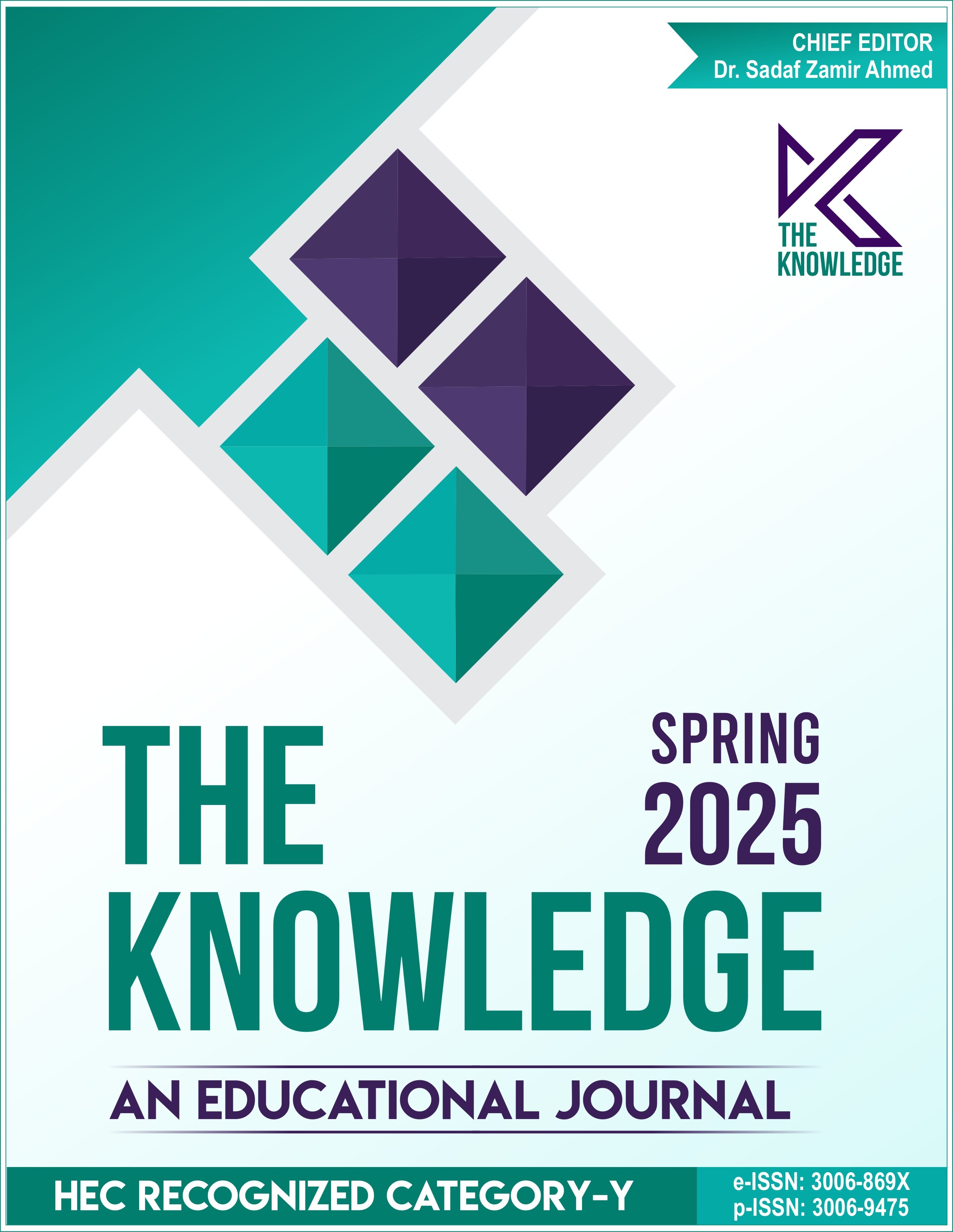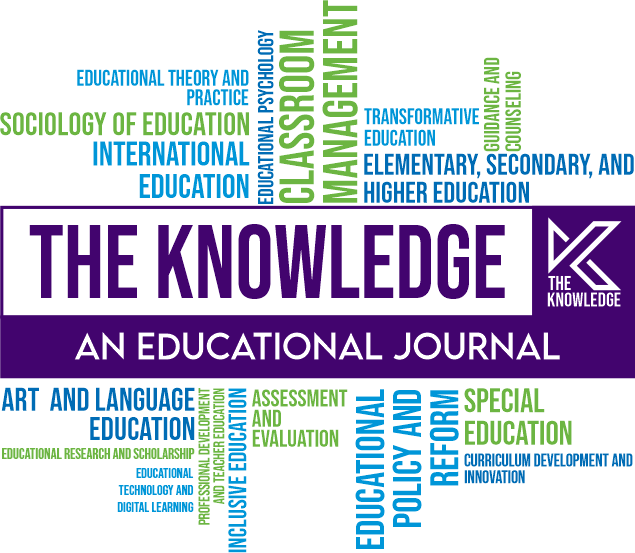Artificial Intelligence Integration: Its Role and Usage among University Students
DOI:
https://doi.org/10.55737/tk/2k25b.42061Keywords:
Artificial Intelligence, AI in Academia, University, StudentsAbstract
Artificial Intelligence in higher education is revolutionizing the way students interact with learning materials, academic tasks, and research. This study investigates the role, adoption, and perceived impact of AI tools such as intelligent tutoring systems, virtual assistants, and adaptive learning platforms among university students. Employing a quantitative research design, utilizing a large-scale survey to collect data from university students across different discipline. Descriptive statistics were used to identify trends by demographic categories including discipline and year of study. Inferential statistics, including regression analysis, were applied to examine the relationship between AI usage and academic outcomes such as achievement, engagement, and time management. Results revealed significant positive correlations between frequent AI use and improved academic performance. The study also identified key barriers to AI adoption, including limited technological access, low awareness of privacy concerns, and insufficient training. Finally, the research highlighted the ethical considerations of integrating AI in education and provided actionable insights for enhancing student learning experiences through effective AI implementation.
References
Agarwal, R., & Prasad, J. (1999). Are individual differences germane to the acceptance of new information technologies? Decision Sciences, 30(2), 361–391. https://doi.org/10.1111/j.1540-5915.1999.tb01614.x
Baker, R. S. J., & Inventado, P. S. (2014). Chapter X: educational data mining and learning analytics. Comput. Sci, 7, 1-16.
Bandura, A. (1986). Social foundations of thought and action. Englewood Cliffs, NJ, 1986(23-28), 2.
Brown, K. A., Gubbay, J., Hopkins, J., Patel, S., Buchan, S. A., Daneman, N., & Goneau, L. W. (2021). S-gene target failure as a marker of variant B. 1.1. 7 among SARS-CoV-2 isolates in the greater Toronto area, December 2020 to March 2021. Jama, 325(20), 2115-2116. https://doi.org/10.1001/jama.2021.5607
Cao, Y., Jian, F., Wang, J., Yu, Y., Song, W., Yisimayi, A., Wang, J., An, R., Chen, X., Zhang, N., Wang, Y., Wang, P., Zhao, L., Sun, H., Yu, L., Yang, S., Niu, X., Xiao, T., Gu, Q., … Xie, X. S. (2023). Imprinted SARS-CoV-2 humoral immunity induces convergent Omicron RBD evolution. Nature, 614(7948), 521–529. https://doi.org/10.1038/s41586-022-05644-7
Carter, K., Gupta, S., Correa, A., Mahmood, K., & Fox, A. (2024). Abstract 4131409: Systemic review and meta-analysis of global longitudinal strain changes after angiotensin receptor nephrilysin inhibitor initiation in patients with heart failure. Circulation, 150(Suppl_1), A4131409–A4131409. https://doi.org/10.1161/circ.150.suppl_1.4131409
Chen, N., Zhou, M., Dong, X., Qu, J., Gong, F., Han, Y., Qiu, Y., Wang, J., Liu, Y., Wei, Y., Xia, J., Yu, T., Zhang, X., & Zhang, L. (2020). Epidemiological and clinical characteristics of 99 cases of 2019 novel coronavirus pneumonia in Wuhan, China: a descriptive study. Lancet, 395(10223), 507–513. https://doi.org/10.1016/S0140-6736(20)30211-7
Choi, S. J., Kim, D.-U., Noh, J. Y., Kim, S., Park, S.-H., Jeong, H. W., & Shin, E.-C. (2022). T cell epitopes in SARS-CoV-2 proteins are substantially conserved in the Omicron variant. Cellular & Molecular Immunology, 19(3), 447–448. https://doi.org/10.1038/s41423-022-00838-5
Cortina Gil, E., Kleimenova, A., Minucci, E., Padolski, S., Petrov, P., Shaikhiev, A., ... & Hahn, F. (2021). Search for π0 decays to invisible particles. Journal of High Energy Physics, 2021(2), 1-27. https://doi.org/10.1007/JHEP02(2021)201
Davis, F. D. (1989). Perceived usefulness, perceived ease of use, and user acceptance of information technology. MIS quarterly, 319-340. https://doi.org/10.2307/249008
Dunaj, C. (2023). Reckoning with corruption: A legal examination of Bridgeport’s political turmoil. American University. https://doi.org/10.57912/24171690.V1
Garrison, D. R., Anderson, T., & Archer, W. (2001). Critical thinking, cognitive presence, and computer conferencing in distance education. The American Journal of Distance Education, 15(1), 7–23. https://doi.org/10.1080/08923640109527071
Green, M., Dunlop, E., Hohl-Ebinger, J., Yoshita, M., Kopidakis, N., & Hao, X. (2021). Solar cell efficiency tables (version 57). Progress in Photovoltaics, 29(1), 3–15. https://doi.org/10.1002/pip.3371
Hernandez, E., Sharma, A. S., Haklay, T., Meng, K., Wattenberg, M., Andreas, J., Belinkov, Y., & Bau, D. (2023). Linearity of relation decoding in transformer language models. In arXiv [cs.CL]. http://arxiv.org/abs/2308.09124
Holmes, O., IV, Jiang, K., Avery, D. R., McKay, P. F., Oh, I.-S., & Tillman, C. J. (2021). A meta-analysis integrating 25 years of diversity climate research. Journal of Management, 47(6), 1357–1382. https://doi.org/10.1177/0149206320934547
Khan, M., Adil, S. F., Alkhathlan, H. Z., Tahir, M. N., Saif, S., Khan, M., & Khan, S. T. (2020). COVID-19: a global challenge with old history, epidemiology and progress so far. Molecules, 26(1), 39. https://doi.org/10.3390/molecules26010039
Khan, M., Khan, H., Khan, S., & Nawaz, M. (2020). Epidemiological and clinical characteristics of coronavirus disease (COVID-19) cases at a screening clinic during the early outbreak period: a single-centre study. Journal of Medical Microbiology, 69(8), 1114–1123. https://doi.org/10.1099/jmm.0.001231
Kumar, M., Patel, A. K., Shah, A. V., Raval, J., Rajpara, N., Joshi, M., & Joshi, C. G. (2020). First proof of the capability of wastewater surveillance for COVID-19 in India through detection of genetic material of SARS-CoV-2. In bioRxiv. https://doi.org/10.1101/2020.06.16.20133215
Lee, J., Nandan, V., Sikka, H., Rugaber, S., & Goel, A. (2023). Designing a communication bridge between communities: Participatory design for a question-answering AI agent. In arXiv [cs.HC]. http://arxiv.org/abs/2308.00813
Li, C., Yang, Y., & Ren, L. (2020). Genetic evolution analysis of 2019 novel coronavirus and coronavirus from other species. Infection. Genetics and Evolution, 82.
Li, Y., Zhang, Y., Timofte, R., Van Gool, L., Yu, L., Li, Y., Li, X., Jiang, T., Wu, Q., Han, M., Lin, W., Jiang, C., Luo, J., Fan, H., Liu, S., Wang, Y., Cai, M., Li, M., Zhang, Y., … Wang, X. (2023). NTIRE 2023 challenge on efficient super-resolution: Methods and results. 2023 IEEE/CVF Conference on Computer Vision and Pattern Recognition Workshops (CVPRW), 1922–1960.
Li, Z., Chen, C., Xie, H., Yao, Y., Zhang, X., Brozena, A., Li, J., Ding, Y., Zhao, X., Hong, M., Qiao, H., Smith, L. M., Pan, X., Briber, R., Shi, S. Q., & Hu, L. (2021). Sustainable high-strength macrofibres extracted from natural bamboo. Nature Sustainability, 5(3), 235–244. https://doi.org/10.1038/s41893-021-00831-2
Lin, J., & Ma, X. (2021). A few brief notes on DeepImpact, COIL, and a conceptual framework for information retrieval techniques. In arXiv [cs.IR]. https://doi.org/10.48550/ARXIV.2106.14807
Liu, P., Yuan, W., Fu, J., Jiang, Z., Hayashi, H., & Neubig, G. (2023). Pre-train, prompt, and predict: A systematic survey of prompting methods in natural language processing. ACM Computing Surveys, 55(9), 1–35. https://doi.org/10.1145/3560815
Luckin, R. (2018). Machine Learning and Human Intelligence. The future of education for the 21st century. UCL institute of education press.
Maton, R. M. (2023). Lessons Learned in the Rutgers University Strike. Workplace: A Journal for Academic Labor, 34, 119–122. https://ices.library.ubc.ca/index.php/workplace/article/view/186953
Mitchell, K., & Pearce, D. K. (2023). The Wall Street Journal panel of economists: How did they do in predicting economic growth in a time of pandemic. Economics Bulletin, 43(1), 177–190.
Mulder, R. L., Font-Gonzalez, A., van Dulmen-den Broeder, E., Quinn, G. P., Ginsberg, J. P., Loeffen, E. A. H., Hudson, M. M., Burns, K. C., van Santen, H. M., Berger, C., Diesch, T., Dirksen, U., Giwercman, A., Gracia, C., Hunter, S. E., Kelvin, J. F., Klosky, J. L., Laven, J. S. E., Lockart, B. A., … PanCareLIFE Consortium. (2021). Communication and ethical considerations for fertility preservation for patients with childhood, adolescent, and young adult cancer: recommendations from the PanCareLIFE Consortium and the International Late Effects of Childhood Cancer Guideline Harmonization Group. The Lancet Oncology, 22(2), e68–e80. https://doi.org/10.1016/S1470-2045(20)30595-7
Neff, R. A., Flinspach, M., Gibbs, A., Shih, A. Y., Minassian, N. A., Liu, Y., Fellows, R., Libiger, O., Young, S., Pennington, M. W., Hunter, M. J., & Wickenden, A. D. (2020). Comprehensive engineering of the tarantula venom peptide huwentoxin-IV to inhibit the human voltage-gated sodium channel hNav1.7. The Journal of Biological Chemistry, 295(5), 1315–1327. https://doi.org/10.1074/jbc.RA119.011318
Nguyen, D. C., Ding, M., Pathirana, P. N., Seneviratne, A., Li, J., & Vincent Poor, H. (2021). Federated learning for internet of things: A comprehensive survey. IEEE Communications Surveys & Tutorials, 23(3), 1622–1658. https://doi.org/10.1109/comst.2021.3075439
Park, J. S., O’Brien, J., Cai, C. J., Morris, M. R., Liang, P., & Bernstein, M. S. (2023). Generative agents: Interactive simulacra of human behavior. Proceedings of the 36th Annual ACM Symposium on User Interface Software and Technology.
Pérez-González, P. G., Barro, G., Annunziatella, M., Costantin, L., García-Argumánez, Á., McGrath, E. J., Mérida, R. M., Zavala, J. A., Arrabal Haro, P., Bagley, M. B., Backhaus, B. E., Behroozi, P., Bell, E. F., Bisigello, L., Buat, V., Calabrò, A., Casey, C. M., Cleri, N. J., Coogan, R. T., … Yung, L. Y. A. (2023). CEERS key paper. IV. A triality in the nature of HST-dark galaxies. The Astrophysical Journal. Letters, 946(1), L16. https://doi.org/10.3847/2041-8213/acb3a5
Rodriguez-Otero, P., Ailawadhi, S., Arnulf, B., Patel, K., Cavo, M., Nooka, A. K., Manier, S., Callander, N., Costa, L. J., Vij, R., Bahlis, N. J., Moreau, P., Solomon, S. R., Delforge, M., Berdeja, J., Truppel-Hartmann, A., Yang, Z., Favre-Kontula, L., Wu, F., … Giralt, S. (2023). Ide-cel or standard regimens in relapsed and refractory multiple myeloma. The New England Journal of Medicine, 388(11), 1002–1014. https://doi.org/10.1056/NEJMoa2213614
Smith, H. A. B., Besunder, J. B., Betters, K. A., Johnson, P. N., Srinivasan, V., Stormorken, A., Farrington, E., Golianu, B., Godshall, A. J., Acinelli, L., Almgren, C., Bailey, C. H., Boyd, J. M., Cisco, M. J., Damian, M., deAlmeida, M. L., Fehr, J., Fenton, K. E., Gilliland, F., … Berkenbosch, J. W. (2022). 2022 Society of Critical Care Medicine clinical practice guidelines on prevention and management of pain, agitation, Neuromuscular Blockade, and delirium in critically ill pediatric patients with consideration of the ICU environment and Early Mobility. Pediatric Critical Care Medicine, 23(2), e74–e110. https://doi.org/10.1097/PCC.0000000000002873
Song, Y., Shen, L., Xing, L., & Ermon, S. (2021). Solving inverse problems in medical imaging with score-based generative models. In arXiv [eess.IV]. http://arxiv.org/abs/2111.08005
Thomas, E. M., Melin, H., Stallard, T. S., Chowdhury, M. N., Wang, R., Knowles, K., & Miller, S. (2023). Detection of the infrared aurora at Uranus with Keck-NIRSPEC. In arXiv [astro-ph.EP]. http://arxiv.org/abs/2311.06172
Vaughan, N. D. (2010). A blended community of inquiry approach: Linking student engagement and course redesign. The Internet and Higher Education, 13(1-2), 60-65. https://doi.org/10.1016/j.iheduc.2009.10.007
Venkatesh, Morris, Davis, & Davis. (2003). User acceptance of information technology: Toward a unified view. MIS Quarterly: Management Information Systems, 27(3), 425. https://doi.org/10.2307/30036540
Venkatesh, V., & Davis, F. D. (2000). A theoretical extension of the Technology Acceptance Model: Four longitudinal field studies. Management Science, 46(2), 186–204. https://doi.org/10.1287/mnsc.46.2.186.11926
Wakelee, H., Liberman, M., Kato, T., Tsuboi, M., Lee, S.-H., Gao, S., Chen, K.-N., Dooms, C., Majem, M., Eigendorff, E., Martinengo, G. L., Bylicki, O., Rodríguez-Abreu, D., Chaft, J. E., Novello, S., Yang, J., Keller, S. M., Samkari, A., Spicer, J. D., & KEYNOTE-671 Investigators. (2023). Perioperative pembrolizumab for early-stage non-small-cell lung cancer. The New England Journal of Medicine, 389(6), 491–503. https://doi.org/10.1056/NEJMoa2302983
Yang, Y., Liu, Y., Lv, X., Ai, J., & Li, Y. (2022). Anthropomorphism and customers’ willingness to use artificial intelligence service agents. Journal of Hospitality Marketing & Management, 31(1), 1–23. https://doi.org/10.1080/19368623.2021.1926037
Zawacki-Richter, O., Marín, V. I., Bond, M., & Gouverneur, F. (2019). Systematic review of research on artificial intelligence applications in higher education–where are the educators?. International journal of educational technology in higher education, 16(1), 1-27. https://doi.org/10.1186/s41239-019-0171-0
Zhang, Y., Li, Y., Cui, L., Cai, D., Liu, L., Fu, T., ... & Shi, S. (2023). Siren's song in the AI ocean: a survey on hallucination in large language models. arXiv preprint arXiv:2309.01219. https://doi.org/10.48550/arXiv.2309.01219
Zimmerman, Barry J. (2002). Becoming a self-regulated learner: An overview. Theory into Practice, 41(2), 64–70. https://doi.org/10.1207/s15430421tip4102_2




